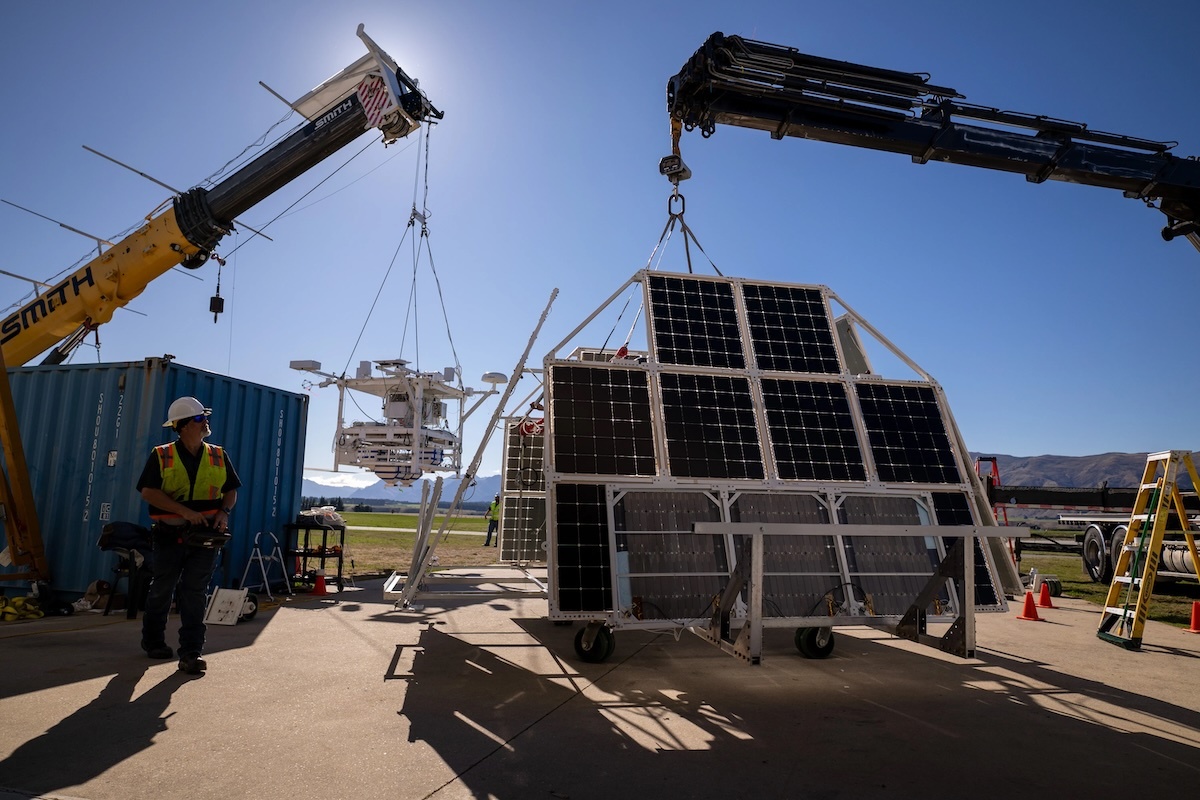3.05.2025

The second scientific balloon in NASA’s 2025 New Zealand Super Pressure Balloon Campaign is now flight-ready and awaits a next launch opportunity from the agency’s dedicated mid-latitude launch site at Wānaka Airport, New Zealand. This will be the second and final balloon to launch for the campaign.
The 18.8-million-cubic-foot (532,000-cubic-meter) helium-filled balloon will travel the Southern Hemisphere’s mid-latitude band on a planned mission of up to 100 days to further test the super pressure balloon technology. The stadium-sized balloon will carry several piggyback missions of opportunity, or smaller payloads, including:
- Compact Multichannel Imaging Camera (CoMIC), led by University of Massachusetts Lowell, will study and measure how Earth’s atmosphere scatters light at high altitudes and will measure airglow, specifically the red and green emissions.
- High-altitude Infrasound from Geophysical Sources (HIGS), led by NASA’s Jet Propulsion Laboratory and Sandia National Laboratories, will measure atmospheric pressure to collect signals of geophysical events on Earth such as earthquakes and volcanic eruptions. These signals will help NASA as it develops the ability to measure seismic activity on Venus from high-altitude balloons.
- Measuring Ocean Acoustics North of Antarctica (MOANA), led by Sandia National Laboratories and Swedish Institute of Space Physics, aims to capture sound waves in Earth’s stratosphere with frequencies below the limit of human hearing.
- INterim Dynamics Instrumentation for Gondolas (INDIGO), led by NASA’s Balloon Program Office at the agency’s Wallops Flight Facility, will measure the shock of the gondola during the launch, termination, and landing phases of flight.
- Sensor Package for Attitude, Rotation, and Relative Observable Winds – 7 (SPARROW-7), led by NASA’s Balloon Program Office, will demonstrate relative wind measurements using an ultrasonic device designed for the balloon float environment that measures wind speed and direction.
The teams stand ready to proceed while they wait for the right weather conditions for launch.
Meanwhile, the first balloon flight of the campaign continues to circle the globe. The balloon is nearing its next mission milestone as it approaches one full rotation of the Southern Hemisphere.
Quelle: NASA
